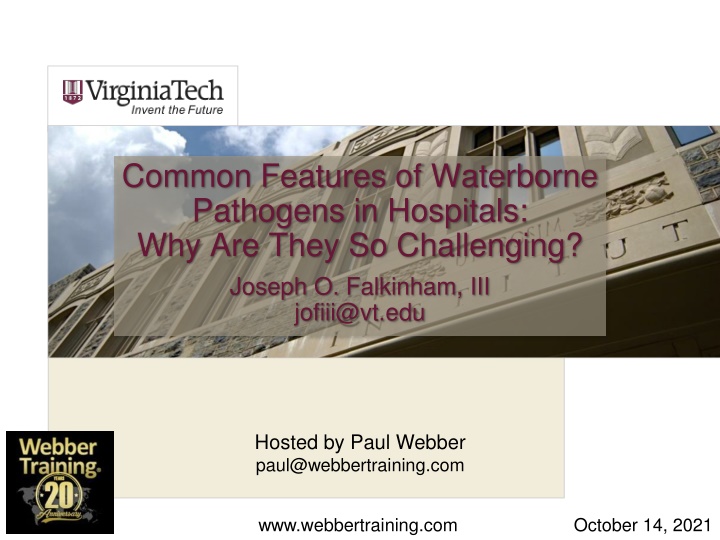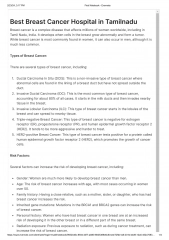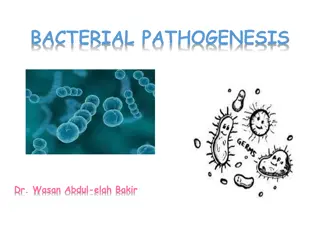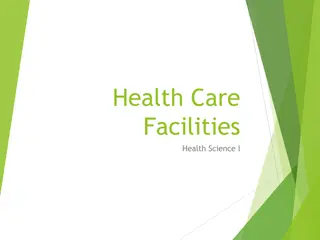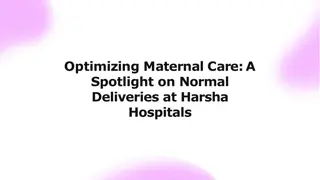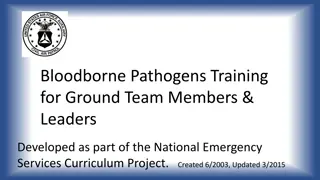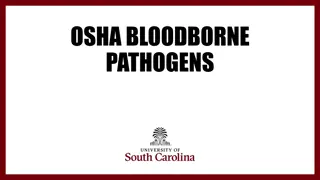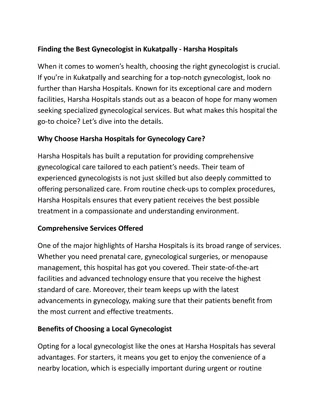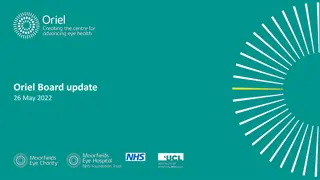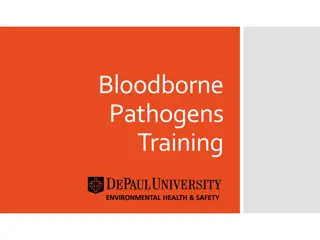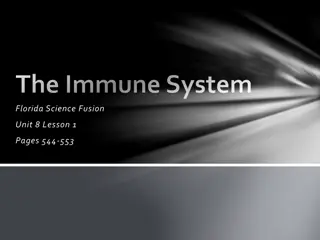Challenges of Waterborne Pathogens in Hospitals
Waterborne pathogens present a significant challenge in hospital settings, with implications for patient safety and infection control. Common pathogens include Mycobacterium avium complex, Pseudomonas aeruginosa, and Legionella pneumophila, among others. These pathogens exhibit shared characteristics such as disinfectant resistance, biofilm formation, and desiccation tolerance. Factors contributing to hospital-acquired infections include patient susceptibility and environmental conditions. Understanding the sources, consequences, and risk factors associated with waterborne pathogens is crucial for effective prevention and management strategies.
Download Presentation

Please find below an Image/Link to download the presentation.
The content on the website is provided AS IS for your information and personal use only. It may not be sold, licensed, or shared on other websites without obtaining consent from the author.If you encounter any issues during the download, it is possible that the publisher has removed the file from their server.
You are allowed to download the files provided on this website for personal or commercial use, subject to the condition that they are used lawfully. All files are the property of their respective owners.
The content on the website is provided AS IS for your information and personal use only. It may not be sold, licensed, or shared on other websites without obtaining consent from the author.
E N D
Presentation Transcript
Common Features of Waterborne Pathogens in Hospitals: Why Are They So Challenging? Joseph O. Falkinham, III jofiii@vt.edu Hosted by Paul Webber paul@webbertraining.com www.webbertraining.com October 14, 2021
Waterborne Pathogens in Hospitals Mycobacterium avium complex (MAC) Mycobacterium abscessus complex Pseudomonas aeruginosa Stenotrophomonas maltophilia Acinetobacter baumannii Sphingomonas paucimobilis Legionella pneumophila 2
Hospital Acquired Infections Life-threatening pneumonia Dermal infections post surgery Life-threatening bacteremia post cardiac surgery (M. chimaera in heater-coolers) 3
Risk Factors Hospital Infection Patients: Immunosuppression, cancer, cystic fibrosis, neonates Hospital Environment: Surgery, intensive care, cardiac surgery, shower exposure, ice exposure, prolonged residence in hospitals 4
Shared Characteristics of Waterborne Pathogens Disinfectant-Resistance Adherence and Biofilm Formation Grow at Low Organic Carbon Desiccation-Tolerant Grow at Low Oxygen (stagnation) Concentrated in Aerosols Grow in Amoebae 5
Consequences of Impermeable Membrane Hydrophobic cells = Adherence Reduced uptake of nutrients Resistance to disinfectants Resistance to antibiotics Reduced rate of growth 6
Consequences of Adherence Biofilm-formation Protective Extracellular Matrix Residence and Persistence Resistance to Disinfection Re-appearance Following Disinfection 7
Waterborne Pathogen Sources Fountains, Drinking Water, Ice Showers, Therapy Baths, Drains Medical Equipment: Bronchoscopes, Heater-Coolers Disinfectant Solutions 8
Routes of Transmission Swallowing water or ice Aerosols: Showers, Therapy Baths, Humidifiers, Drains, Medical Equipment Sterilizing Solutions Inoculation from Bronchoscopes Construction Activities 9
Monitoring Challenges Numbers Don t Correlate with E. coli, HPC, nor Other Measures Enumeration Requires Special Media and Long Incubation Enumeration by PCR No Infectious Dose Identified Where and When to Monitor 10
Emergency Remediation Actions: Circulate Very Hot Water: 70 C Circulate High Chlorine: 5 ppm Problem: How to Remove Biofilm? Never Get Rid of OPPPs 11
Regular Remediation Drain Water Heater Monthly Raise Water Heater to 70 C Reduce Stagnant Portions: Flush Remove All Dead Ends Point-of-Use Filters and Shower Heads Remove Aerosol-Generators 12
Green Buildings Enrich NTM Numbers Lower Water Heater Temperatures Longer Water Residence Time Reduced Flow, Misting Shower Heads Biofilm Build-Up 13
